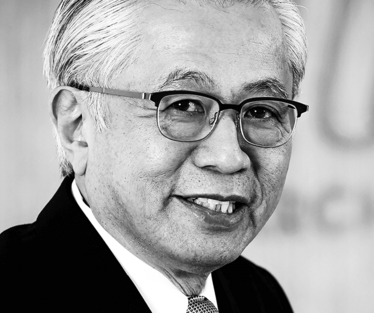United Science Stands
Sitting Down With… William Chin, Executive Vice President, Scientific and Regulatory Affairs, Pharmaceutical Research and Manufacturers of America (PhRMA).

You moved from academia to pharma quite late in your career – why?
When I moved to Eli Lilly, a lot of people thought I’d gone crazy. I was in academia for 25 years as a physician–scientist and was a Professor at Harvard. But during the latter part of my academic career I got more and more interested in translational research and the whole issue of how we can better move ideas from the bench to the clinic. In many ways, industry was setting the pace back then – and I wanted to be part of it. It was a steep learning curve and at times I felt like I was starting out again as a new Fellow – it was disquieting but also energizing.
What attracted you to your current role at PhRMA?
After 11 years at Eli Lilly, I returned to Boston to become the Executive Dean for Research at Harvard Medical School. There, my job was to foster work in translational science and work on creating better collaborative research partnerships, primarily between academia and industry. But it was hard to get companies to come together. So when an opportunity came up at PhRMA to lead scientific and regulatory affairs and to bring scientists together from industry and academia, I found that particularly exciting.
Tell us more about the collaborative partnerships.
Companies are by nature competitive in a business sense. There is a tendency to think that the science in the companies must be competitive too – but that’s not necessarily true. What if we didn’t need to keep repeating the same work? If we could share our findings, it could be a tide that raises all boats. Groups could come together to share information and use that work as a platform to develop competitive products. In February there was a great example of precompetitive collaboration, coordinated by the National Institutes of Health – the Accelerating Medicines Partnership. The concept was to bring together biopharmaceutical companies, academia and governments to work on some of our biggest medical problems, including Alzheimer’s disease, Type 2 diabetes and autoimmune diseases. For instance, we know precious little about Alzheimer’s disease – we don’t know what causes it or what leads to some patients having faster progression than others. One company alone is unlikely to ever find these answers, but by pooling their resources and talent, multiple companies stand a chance.
How do you expect to see these collaborations develop in the future?
While there are certainly plenty of precompetitive partnerships out there, I would argue that they are not all equally effective. The challenge for the future is to create focused partnerships that provide results that meet the needs of all partners. It’s very important to make sure there is an alignment of goals. Otherwise, the project will probably stall and everyone will be left disappointed. We need to look toward those who are succeeding, learn from them, and apply that knowledge to new collaborations.
What developments will be the game changers of the future?
I’m very excited about progress in cancer therapies. We now know many of the molecular targets that lead to cancer and we’re developing medicines that attack those targets. Cancer is not just one disease – there are hundreds of permutations – and our increasing knowledge is allowing us to target the therapy to an individual patient’s disease.
Another exciting area is autoimmune disease. For many years, this whole area of immunology was befuddling. We really didn’t have a clear picture of how the system works – how it protects us and how it harms us when it goes out of control. As research advances, we now have hope that we might make as much progress in this area as we have in cancer.
A final example is what we are now learning about the human microbiome. We always knew we had bacteria growing in our guts and elsewhere in our bodies, but somehow no one ever thought that might be important. As it turns out, the bacteria are not just passive residents - they interact with us, talking to our bodies and influencing our health. That has interesting implications for therapeutics.
What is PhRMA’s role in moving science – and the industry – forward?
If we can make these precompetitive collaborative partnerships work better, I think they will be key to speeding up progress. Another area of interest is clinical trials, where the system is under pressure due to the low level of participation of patients in such studies. How can we help people to understand that participating in clinical trials is important? We need to help educate people that while it may not help them directly, it is certainly critical for future generations.
You have achieved a lot during your career. What drives you?
That’s easy – patients. I’m an endocrinologist by trade and I know how badly patients need better treatments, so the thing that gets me out of bed in the morning is the opportunity to get more effective medicine to patients, more efficiently. And the pharma industry is a big part of the system that allows us to do that.



















